Tracking the Barbie movie’s marketing success
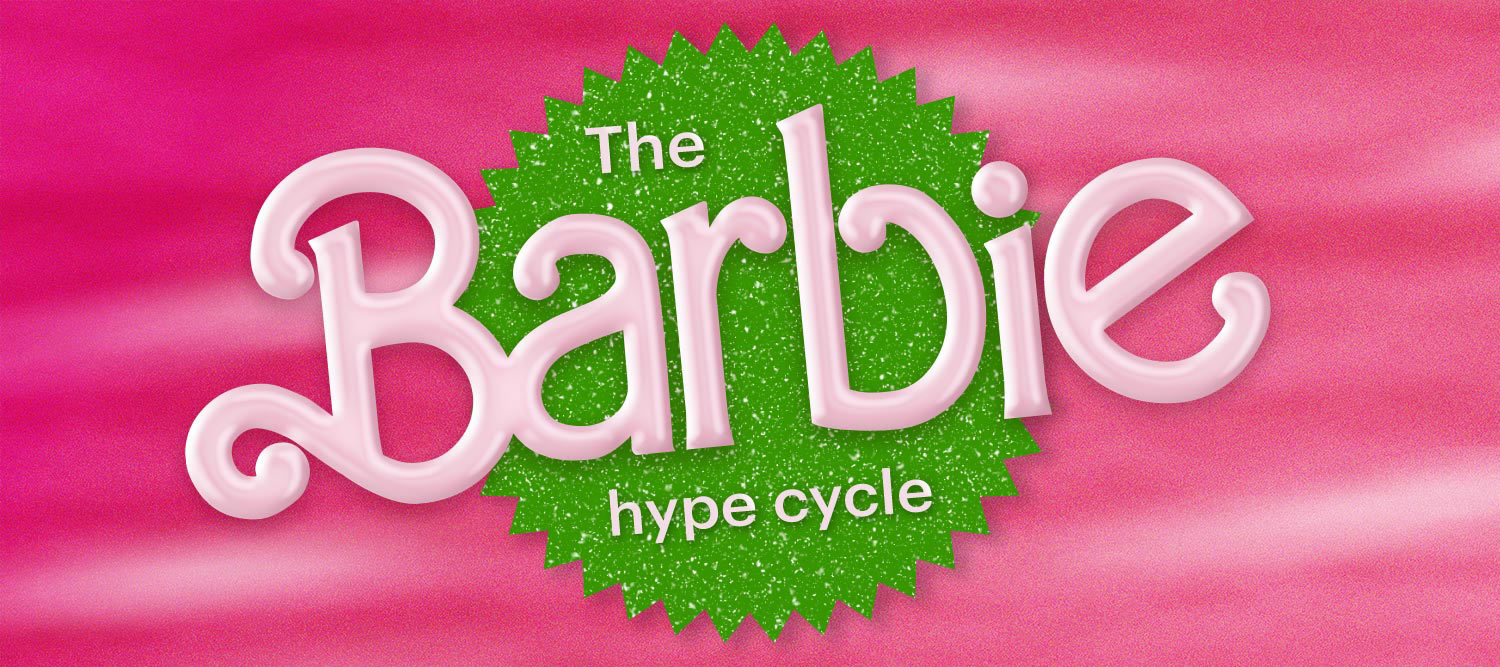
On May 23, the world got a lot pinker: the Barbie trailer dropped, kickstarting a marketing success story. Over the next eight weeks, the Barbie movie marketing juggernaut produced a myriad of memorable moments, from the Barbie Dreamhouse to the pink carpet.
Its viral marketing campaign translated to box office success, with the film making $774m after its first week in theaters. Given this phenomenal performance, Relative Insight wanted to know what part of the Barbie movie hype resonated most with audiences.
To find out, we used a social listening tool to gather online conversations about the movie between its trailer launch and following its first week of release. This amounted to more than 2.5 million words — too many for a human to analyze efficiently and effectively. However, the Relative Insight platform can make sense of these conversations within minutes, making it easy to discern the most engaging elements of Barbie‘s marketing.
Interpreting how conversations evolved over the nine-week period, based on the movie’s marketing strategy, began by analyzing what aspects of these discussions overindexed on a weekly basis using Relative Insight Explore. By comparing the topics, words, phrases, grammar and emotions tweeters used each week, Explore rapidly identified the aspects most prevalent in each of the nine weeks.
To visualize how the viral marketing campaign influenced conversations over this period, we used Relative Insight Heartbeat. We defined themes related to the movie’s marketing strategy using the elements uncovered in Explore. Then we plotted these themes into a Heartbeat chart to illustrate how they changed week by week.
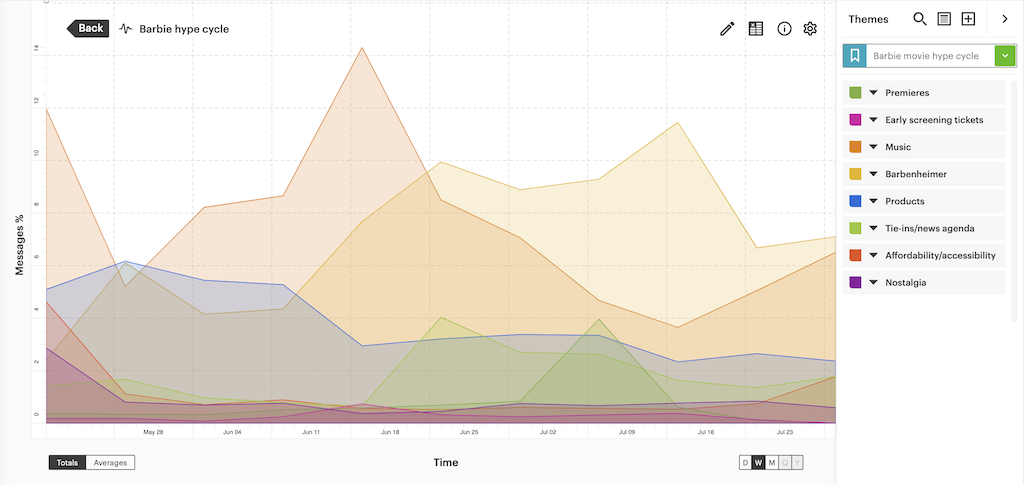

Visualizing text data in this way shows that, while the Barbie movie marketing campaign did capture the imagination, the film’s success can be attributed to its soundtrack and sharing a release date with Oppenheimer.
Learn how Relative Insight’s tools unlock actionable insights
Barbie trailer unlocks nostalgia
Warner Brothers dropped the film’s trailer on May 23rd to kickstart the Barbie marketing campaign. Beyond initial audience reactions to the trailer itself, the release evoked nostalgia among tweeters.
In the opening week, people were more likely to reference the Barbies they had when they ‘grew up’ (4.6x), in their ‘childhood’ (2.4x) and what their ‘parents’ (3.7x) bought them.
“Me and the generation of millennial women who grew up with Barbie, for better or worse, haven’t had a good rom com in a decade and want to see our childhood heroes fully realized on screen.”
While unplanned by movie makers, the movie remained in public discourse in the week following the trailer drop thanks to comments by comedian Avery Edison. Twitter users responded in force to her opinion that Barbie dolls were for rich kids — they were 28.9x more likely to talk about the doll’s ‘affordability’ in the week following the trailer. They also argued that the toy was ‘accessible’ (3.9x) to all children, regardless or wealth.
“I feel like she could just say she hates Barbie without making it into class discourse cause they were honestly one of the few truly affordable /accessible toys out there, not like American Girl or something!“
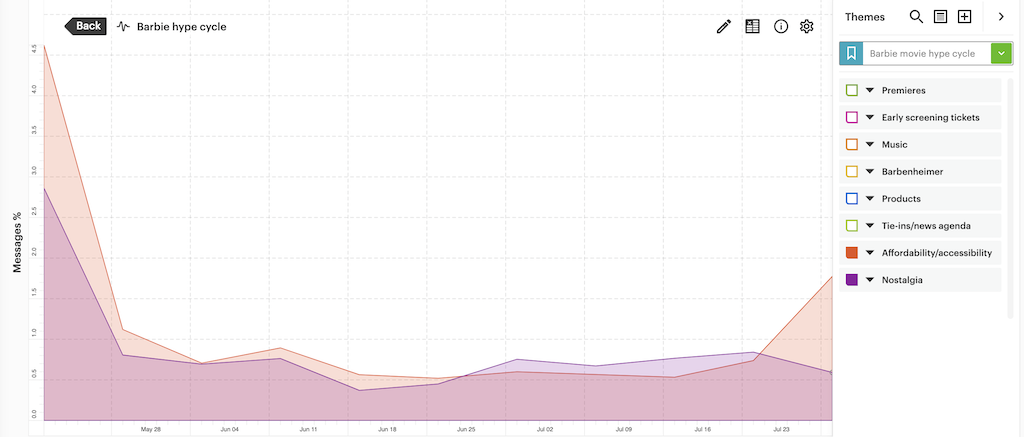

As the Heartbeat chart shows, these conversations were dominant before the movie executed its viral marketing campaign, before tailing off as the weeks went on. However, these two themes ensured Barbie remained in the public consciousness following the trailer launch, establishing a platform for marketing to come.
Soundtrack rather than activations power movie marketing strategy
On the surface, before analyzing online conversations, marketing activations such as the life-sized Barbie Dreamhouse, multiple pink carpet premieres and a menagerie of memes appeared to be driving the Barbie movie’s marketing success story. The Heartbeat chart shows that people began talking about different activations and the movie’s marketing strategy from the end of June, while its pink carpet premieres also drove discussions.
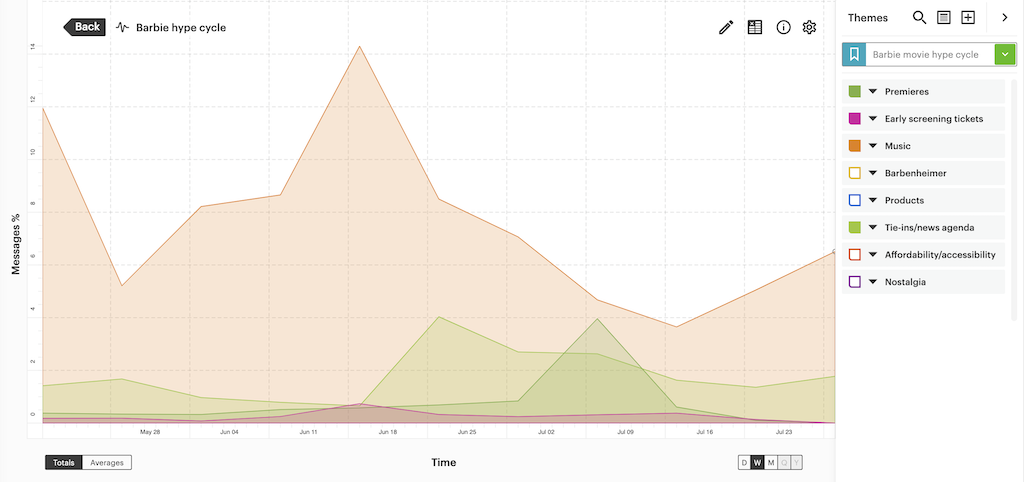

However, another aspect of the movie struck a wider a chord with audiences – and actually it seems that the hype around it should be credited to the soundtrack, rather then simply the clever marketing activations.
From the trailer onwards, discussions about music consistently exceeded those highlighting marketing activity, tie-ins and news related to the movie, such as pink paint shortages. These conversations peaked with the launch of Barbie World, Nicki Minaj’s remix of Aqua’s iconic song and, despite a consistent fall after this peak, it still dominated discourse around the movie.
“Barbie World is gonna be the 1st rap song to hit #1 this year.“
The movie’s music also resonated with theater-goers, as shown by the increase in discussions after its release.
Barbenheimer sustains a viral marketing campaign
Warner Brothers’ choice to release Barbie on the same day as Christopher Nolan’s Oppenheimer has proven to be a masterstroke. While not a direct part of the movie’s marketing strategy, audiences have taken the contrast between the two and run with it — using the portmanteau ‘Barbenheimer’ to group them together.
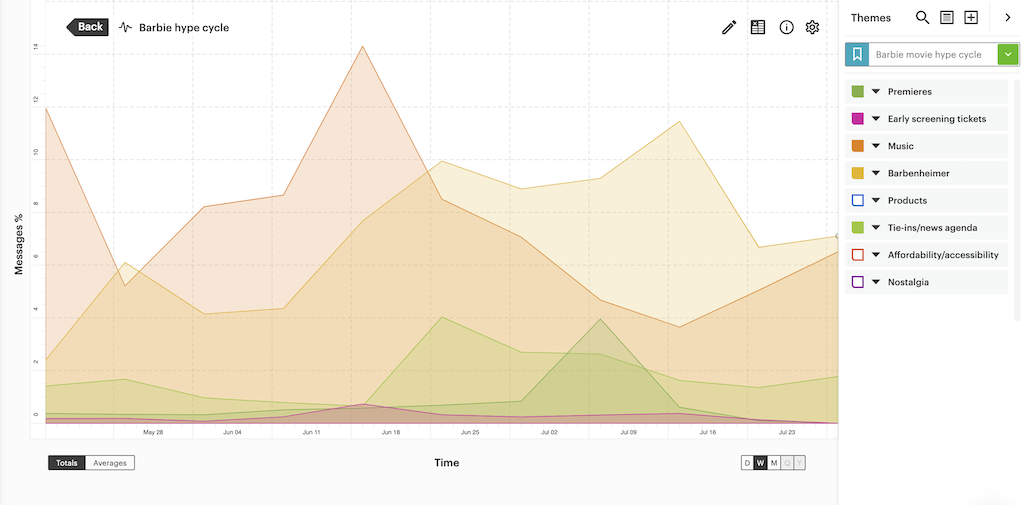

Tweeters used the words ‘Oppenheimer’ and ‘Barbenheimer’ 1.6x more in the week leading up both films opening. However, as the Heartbeat chart illustrates, the relationship between both films has dominated conversations following the Barbie trailer release. Indeed, the week after the theme song release, Barbenheimer was the most prevalent element in conversations about the movie.
“What’s the consensus on a Barbenheimer double feature? Is it Barbie first then Oppenheimer? Or vice versa?“
“I really am putting a lot of thought into Barbenheimer this weekend. Right now I’m thinking Oppenheimer first. Barbie might be needed to bring up the mood after watching a film about mass murder 😌 🤞🏾. What order are y’all watching in?“
Whether the matching release day was a deliberate ploy from the Barbie movie marketing team or a happy accident, it drove interest in both up until they opened on July 21st.
Barbie movie hype doesn’t translate into product interest
One of the hallmarks of the Barbie movie’s marketing strategy is the tie-in with products. While box office receipts is Warner Brothers’ primary measure of success, manufacturer Mattel will expect the movie to translate into toy sales.
Promotions linking the movie with products ranged from more traditional items, such as the Dreamhouse and Barbie-motifed clothing, through to less obvious items specifically launched to coincide with the movie’s release – including an Xbox, hoodies, Crocs and even insurance.
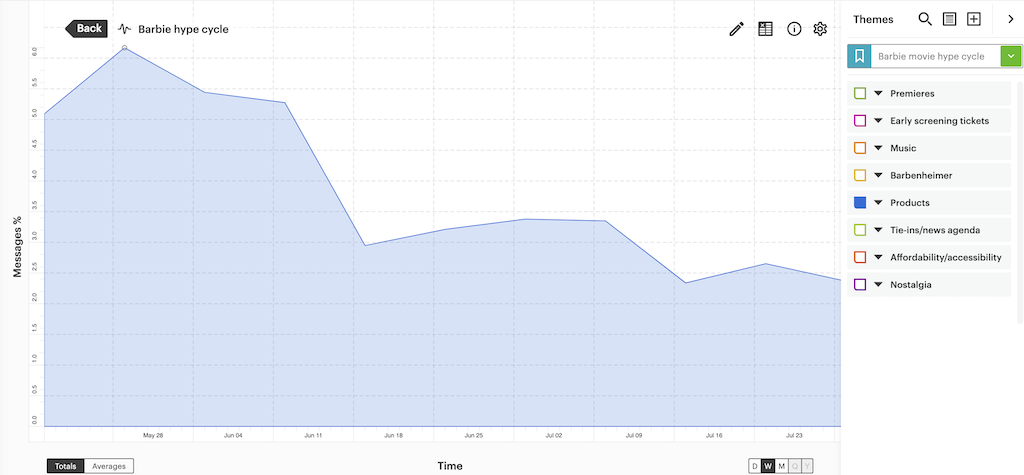

However, our analysis of online conversations showed that discussions about products fell as the Barbie movie hype accelerated. Online conversations referencing Barbie products peaked in late May, with tweeters discussing this aspect than any other theme. As the Heartbeat chart shows, this peak was followed by a substantial drop in people talking about Barbie products, before levelling off across the rest of the promotional cycle.
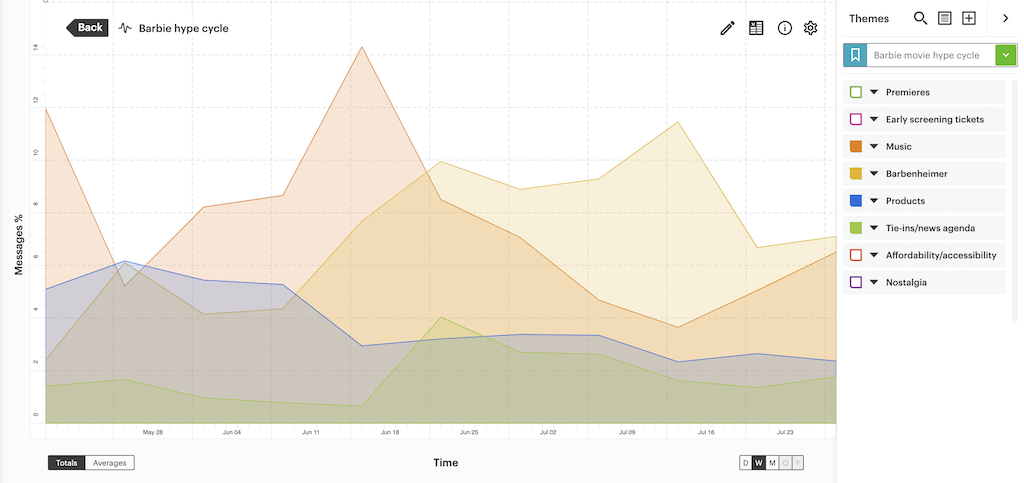

The second chart illustrates how product-related conversations compared to other themes. It shows that people were talking about the soundtrack and Barbenheimer far more, despite the movie’s marketing strategy incorporating Barbie products wherever possible.
Mattel will hope that audiences’ attention pivot from the movie to Barbie products as time passes, however, the chart again shows that this didn’t occur within the first week that it was released in theaters.
What text analytics reveals about Barbie movie marketing
Barbie movie marketing has been ubiquitous, however, analyzing social conversations shows what elements contributed most to this marketing success story.
Nostalgia and an organic social discussion about affordability kept the movie front of mind after the trailer release, before talk about Barbie products dominated. Despite a range of tie-ins and stunts forming the backbone of the viral marketing campaign, the movie’s soundtrack and relationship with Oppenheimer were the key drivers of audience conversations in the six weeks prior to its release.
While other movies won’t have the marketing budget Barbie enjoyed, these two elements are something they can replicate. Having a strong soundtrack – that features in the trailer and released in full prior to the movie’s release – has as much impact as any viral marketing activation. Filmmakers also shouldn’t be afraid of launching at the same time as other films, if it creates a memeworthy contrast.
Life in plastic is fantastic, and uncovering insight is a delight with text analytics. Find out how Relative Insight’s text analysis tools can make the insights process as fun as a week in the Barbie Dreamhouse.
